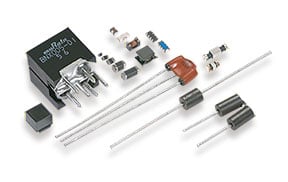Noise Suppression Products / EMI Suppression Filters / ESD Protection Devices
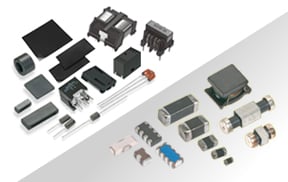
Noise Suppression Filter Guide
Noise filters are used for noise suppression in electronic equipment. When selecting a noise filter to be used, care must be taken to ensure that the filter eliminates noise appropriately while not causing a decrease in signal quality leading to equipment malfunction.
In this article, we first introduce the areas of performance you must pay attention to when using filters for noise suppression, and then introduce a line of noise filter products with enhanced performance in these areas.
When employing noise filters, different noise suppression products you select will depend on the circuits where they will be used and the frequencies where noise is to be suppressed. For example, in Figure 1, noise suppression products for use in a power line are divided into three broad categories according to the following properties:
<1> DC superposition characteristics
<2> Low-frequency noise removal performance
<3> Ability to handle high electric current
This article describes the first property, DC superposition characteristics.
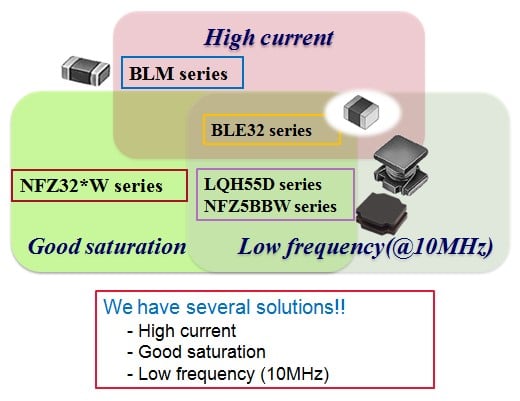
Electrical characteristic data is typically included with the noise filter specification sheet, but when it comes to actually incorporating the filter into the electronic circuit and using it, you might not obtain the characteristics indicated on the that sheet. One reason for this is that noise filters are dependent on the current, which means in some cases they may not exhibit the expected performance.
One of the most important criteria for selecting a noise filter is its electrical characteristics when a current passes through it (its so-called DC superposition characteristics).
For an inductor-type noise filter, because the impedance curve changes significantly when direct current flows through it, these superposition characteristics must be taken into account when selecting components. (Figure 2)
Murata's NFZ5BBW series of filter products, introduced below, has outstanding DC superposition characteristics, exhibiting very small changes in electrical characteristics when current is applied.
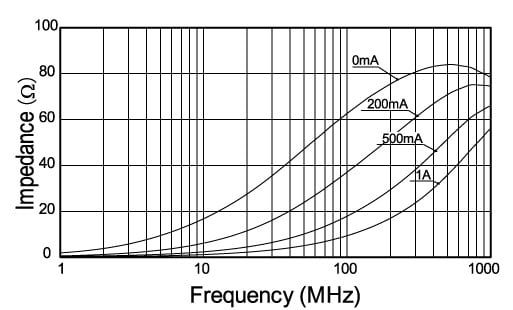
The electrical characteristics of the NFZ5BBW series are shown in Figure 3. The NFZ5BBW series product lineup includes components with impedance peaks from 10 MHz up to 300 MHz, allowing you to select the component corresponding to the frequencies where noise is to be eliminated. These features make the NFZ5BBW series useful for low-frequency (10 MHz to 300 MHz) noise suppression (on a power line), for example in the suppression of radiated noise for LED lighting.
Click here for details of the NFZ5BBW series
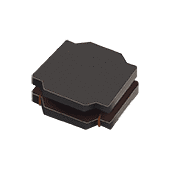
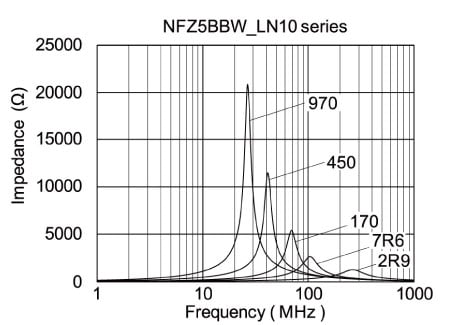

Figure 4 shows the crucial characteristics when direct current is flowing. In the NFZ5BBW series, the electrical characteristics hardly change at all even when superposition occurs. As a result, you can expect to obtain noise suppression that is just as effective as described in the specification sheet, even when applying current that is close to the rated current.
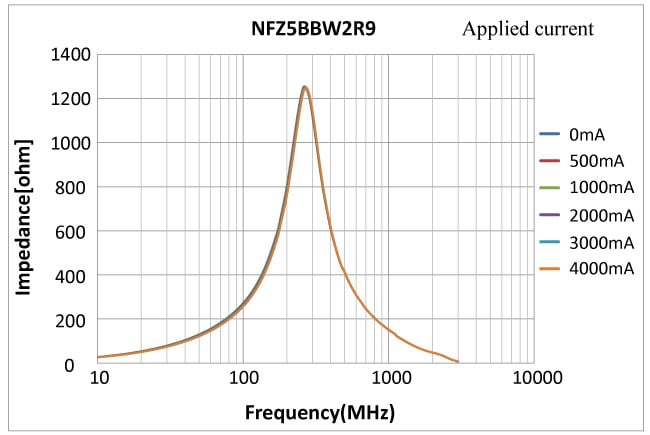
When using a noise filter in a power line, you need to be aware of how the performance changes at the time of current superposition. The NFZ5BBW series, which we introduced here, is a line of noise suppression products with outstanding DC superposition characteristics. When there is not much current flowing, a normal noise filter is fine, but in some cases, it is important to select a component with superior DC superposition characteristics, such as the NFZ5BBW series introduced here.
In this article, we explained the DC superposition characteristics of noise suppression products. In other articles, we address the other two topics mentioned above, namely low-frequency noise removal performance and the ability to handle high electric current.
Nobuyuki Wakatake
Product Engineering Section 3
Product Engineering Department
EMI Filter Division
Murata Manufacturing Co., Ltd.
The information presented in this article was current as of the date of publication. Please note that it may differ from the latest information.

